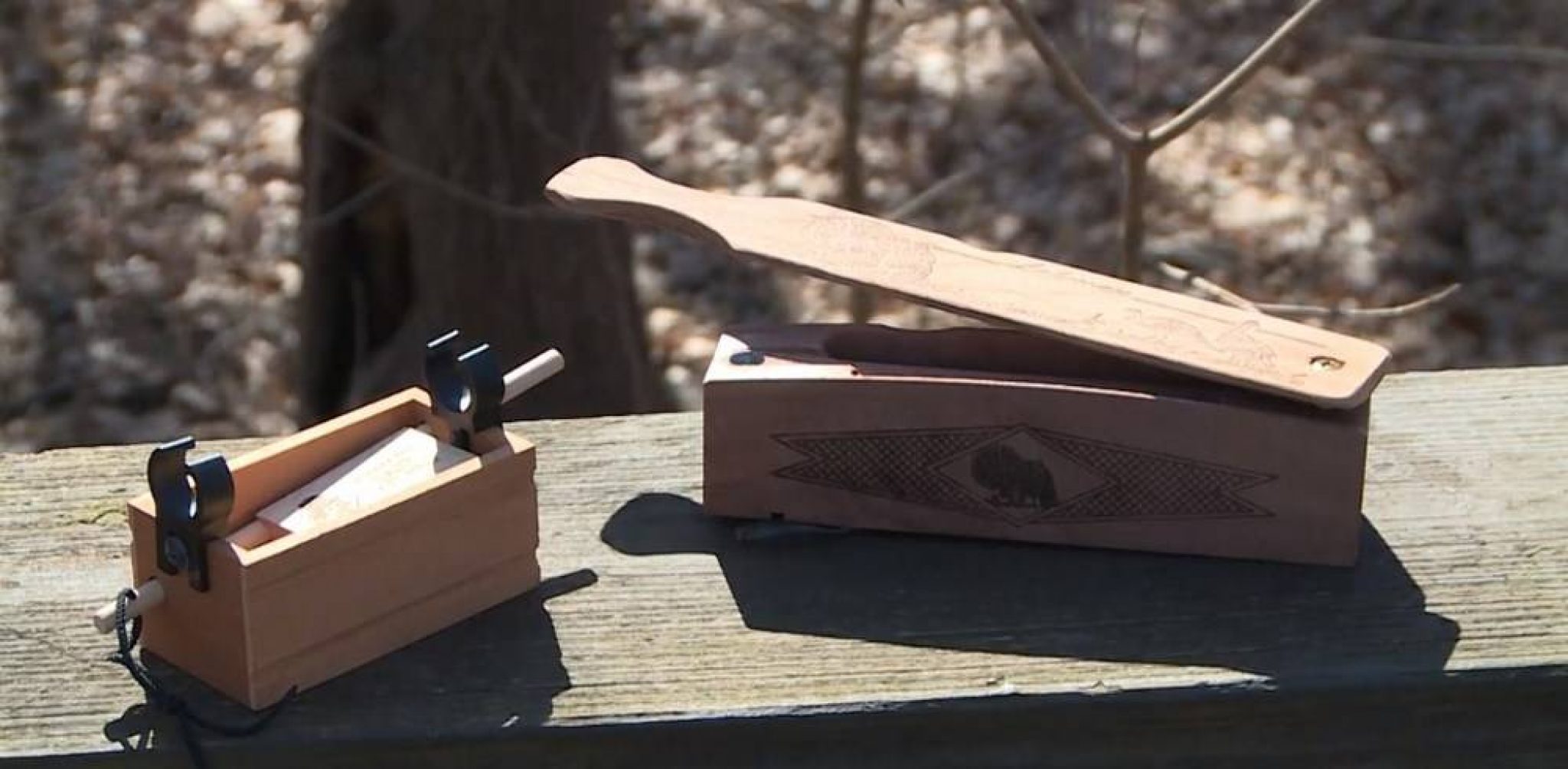For many turkey hunters, the ability to use a box call effectively is an essential skill. A quality box call that’s tuned and used properly can draw in wariest of gobblers from far away. With some practice and technique you can become a master at using this classic turkey hunting tool.
What is a Turkey Box Call?
A turkey box call is a rectangular wooden box with a paddle or striker that, when scraped against the box’s sides, mimics the sounds of a hen turkey. The hollow chamber amplifies the sound and projects it over longer distances. Box calls are very versatile and can recreate almost all the noises wild turkeys make from soft clucks and purrs to excited yelps and fly down cackles. They take a bit more skill to master than push-button style calls, but allow more customization and nuance in sounding like a real turkey.
Getting Started with a Box Call
When just starting out, it’s best to begin with a quality box call from a reputable brand. Look for one made from durable wood like walnut, maple or cedar. The paddle shape and size impacts sound – longer narrow paddles are good for louder, ringing calls while shorter fatter ones create softer, muted tones. Look for a paddle that’s comfortable for your hands. Single-sided boxes are easier for beginners while double-sided versions allow more versatility.
Be sure to “tune” the call by rubbing chalk on the paddle bottom to optimize the sound Carpenter’s chalk works best Avoid oil-based products which can ruin the wood, Store your call in a ziplock bag when not using to keep the chalk dry,
Find a quiet spot to practice – calls sound very different outdoors from in your living room. Spend time experimenting to get a feel for the basics – soft clucks, excited yelps, purrs and cutting. Pay attention to paddle pressure, speed and lip contact. With experience, you’ll learn to control pitch and volume.
Advanced Box Call Techniques
Once you’ve mastered the basics, there are some advanced turkey calling techniques to learn:
-
Fly down cackle – Make some soft clucks then loud, rapid strokes followed by varying yelps to mimic a hen flying down from the roost.
-
Kee kee run – Find the paddle’s sweet spot and make three fast whistle-like kee notes followed by a few yelps. Longer box calls work best.
-
Gobble – Wrap a rubber band around the box to restrict paddle movement Hold upright and vigorously shake from side to side
-
Cutting – Sharply pop the paddle off the lip making fast clucks that indicate aggression.
-
Purr – Slowly drag paddle across lip to mimic contentment.
-
Cluck – Use short upward pops of the paddle to mimic feeding.
Customizing Your Calling Strategies
With experience, you’ll learn how to adapt your calling strategies based on the season, weather conditions, time of day and bird behavior. For example, use high-pitched, excited calls on spring mornings, while lower, raspy purrs work better on lazy afternoons. Pay attention to timestamps between gobbles and mimic that pattern. And remember that less is often more – don’t overcall.
Mastering the turkey box call does take practice but allows you to project sounds over distance and control the tone and tempo. Follow these tips and you’ll be creating calls so realistic you can fool even the savviest old tom. With the right skills and techniques, this classic call will serve you well out in the turkey woods.

How To Use a Box Call Turkey Hunting | SCHEELS
FAQ
How far can a turkey hear a box call?
How often should I use a turkey box call?
How do you use a box call while turkey hunting?
Learn how to use a box call while turkey hunting. Most box calls are made of wood. When you scrape the paddle bottom against a side panel’s lip (many have two; some just one) the hollow chamber inside the narrow, rectangular box makes a sound — ideally one a wild turkey would like to hear.
How do you make a turkey call?
This friction-based call involves working the paddle (lid) over the sides of the box (trough) to create turkey sounds. Box calls are relatively easy to use and they can run very loudly, which helps with striking far-away toms. Diaphragm (Mouth) Calls: The diaphragm (mouth) call is another excellent option.
What are the best turkey calls?
Read our review of the best turkey calls here. Box Calls: The box call is a great option for beginners and experienced turkey hunters alike. This friction-based call involves working the paddle (lid) over the sides of the box (trough) to create turkey sounds.
When should you use turkey calls?
Know when to use certain turkey calls, such as mouth calls, box calls, and slate calls. For example, on a windy day, a high pitched, loud box call will be more effective at striking toms. When a gobbler is close, you want to use a soft mouth call (so that you can have your hands on your gun, ready to shoot).
